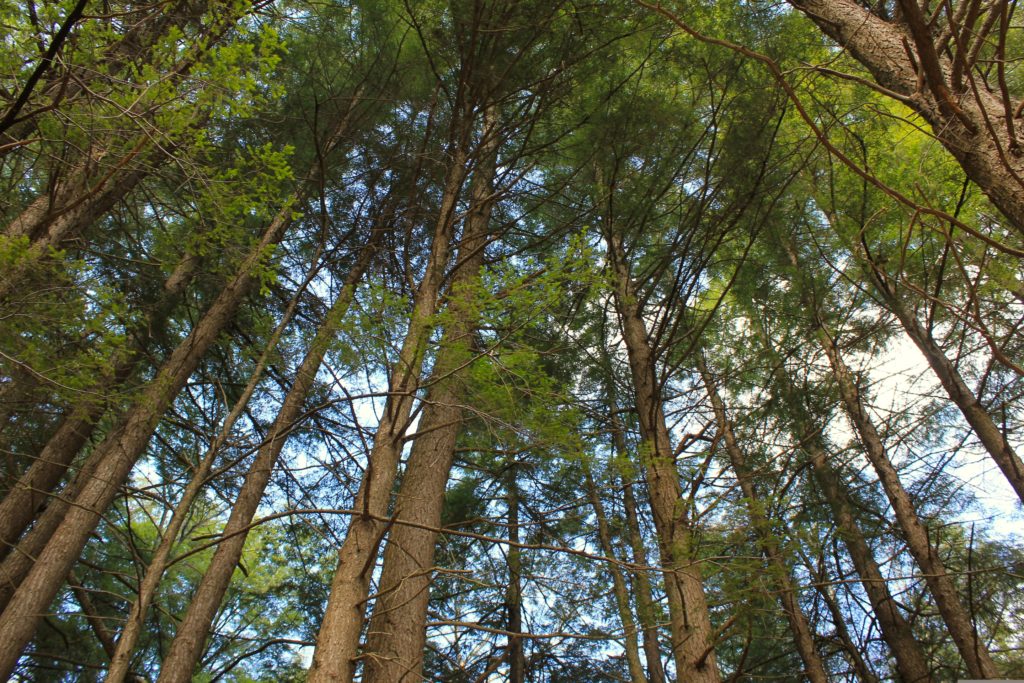Catskills’ Writer and naturalist John Burroughs (1837-1921) called hemlock forests “…dark, sheltered retreats” and there is an earthy stillness in a hemlock forest that’s incomparable with the rest of the rocky Catskills forest. The trees are tall, majestic statesmen, all going in the same direction, unwavering in their straightness, like woodland sentries guarding over life below them. Hemlock forest floors are a thick, bouncy carpet made of billions of hemlock needles which seems to absorb all the sound, and the bark is a rich brown that soaks up the light. On bright, cloudless, sun-filled days, beams of sunlight break through the hemlock canopy like flashlights pointing from above into the tranquil haven. The smell is intoxicating.
“Their history is of a heroic cast,” wrote Burroughs of the hemlocks. “Ravished and torn by the tanner in his thirst for bark, preyed upon by the lumberman, assaulted and beaten back by the settler, still their spirit has never been broken, their energies never paralyzed.”
Here in the Catskills, again the hemlocks are under attack due to the long march of the Hemlock Wooly Adelgid, a pest that has been ravaging our local population of hemlocks since the 1980s. Signs that your hemlocks are under attack are pretty obvious. If you observe a thick, white foam on the underside of the hemlock leaves, you should send an email to: DSNIDER@CATSKILLCENTER.ORG who works with CRISP, the Catskills Regional Invasive Species Prevention project run by the Catskill Center that is now using biological methods to counter the pests.
According to the Catskill Center: “The hemlock woolly adelgid (Adelges tsugae), a relative of the aphid, is a destructive invasive species in the Catskills. This native of Asia has been spreading through the Hudson Valley and Catskills since the late 1980’s. The adelgid causes Hemlock trees to loose new shoots, and is usually fatal. The wind, birds, other wildlife and the movement of infested host material (wood) by humans are all factors in the dispersion of the adelgid. There is now hope that Hemlock Wooly Adelgid can be put in check using biological control. Small Laricobius beetles are native to the Pacific Northwest region of the United States. They are the best known predators of hemlock wooly adelgid. Laricobius were approved by the USDA for field release in 2000. Biological control does not require chemicals to be introduced into the environment and, once established, biological control agents can be a long-term and sustainable solution to invasive species”
CRISP recently began a release of 500 Laricobius predators. These predators were released at Mine Kill State Park. Mine Kill State Park was selected for release as the stands of hemlock there are still healthy, and in the very early stages of infestation, so the predators will have plenty of adelgids to eat. With this initial collection of 500 bugs, CRISP released about 150-200 per tree and will continue to monitor them over the coming years to make sure they are establishing.
Go to CRISP to find out more.
